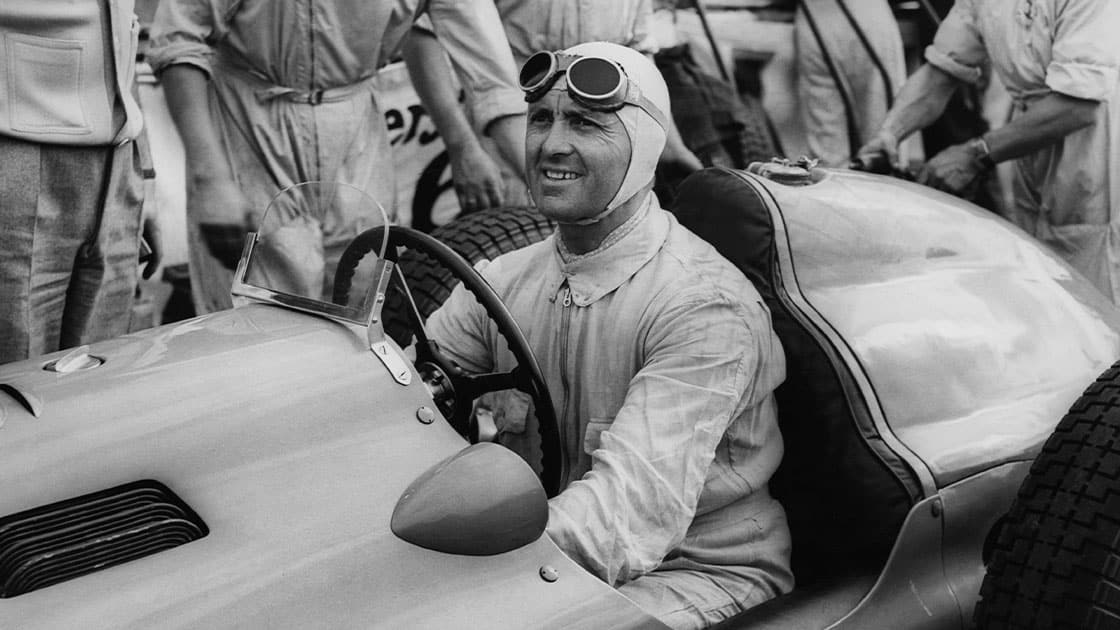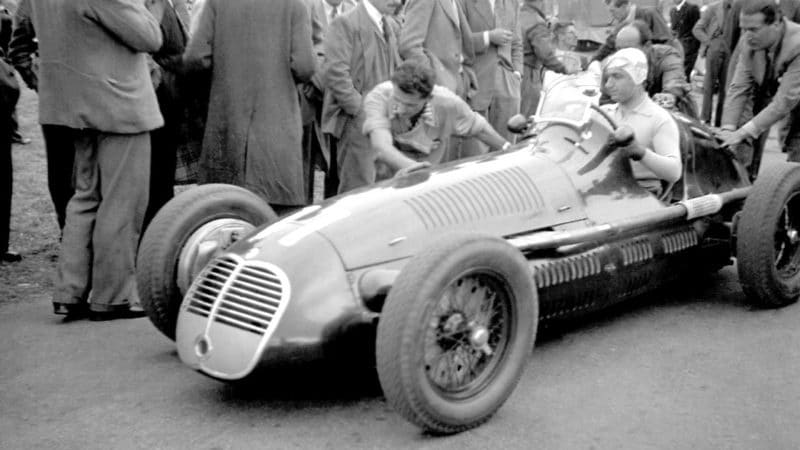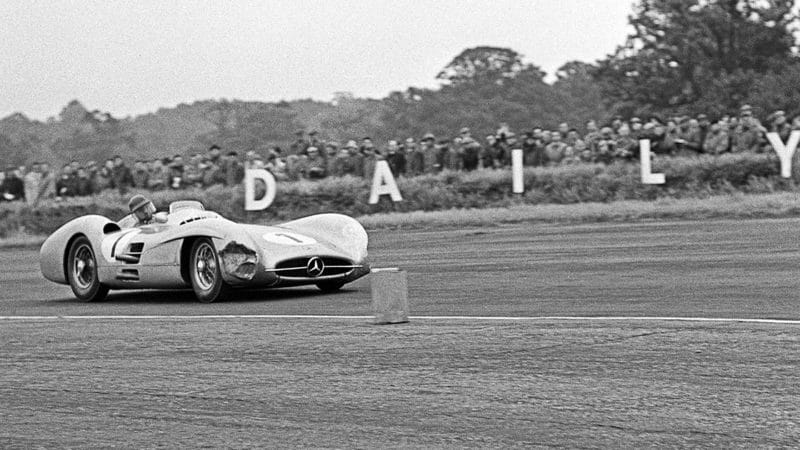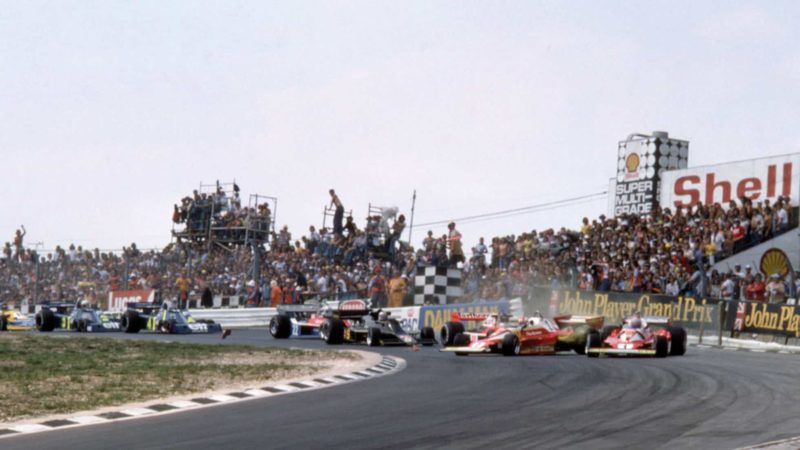But in those days, it was frankly not on par. The use of the actual aerodrome’s taxiways and landing strips made it terribly flat and dull. It was also rather bumpy but the cars of the period could put up with it, and many drivers wore stomach belts. The pits were rather rudimentary. They were located after Abbey curve, not at all where they are now as the track layout was completely different from today’s. I remember the paddock accommodation was so primitive that the men’s toilets consisted of a tent under which a large hole had been dug and people were circling the hole!
However, one of the most impressive things was the car park. This was at a time when new cars were reserved for export, so all the spectators turned up in pre-war cars; being enthusiasts many of them were driving cars which now change hands at Brooks for small fortunes. And they had been shepherded by makes. So Gregor Grant, Autosport’s future founder, whom I had met there, took me round the ‘corrals’ to show me a gaggle of Alvis 12/50s next to a fleet of 4½-litre Bentleys (funny, I didn’t see a single ‘Blower’ and nowadays so many Bentleys are supercharged!). The MG corral was by far the largest one, there were rows and rows of every model.
The track layout was changed the next year and again for 1950 which was the third Silverstone, the second post-war British GP and the first one to count for the World Championship. Frankly, the Brits didn’t give a hoot about the World Championship in 1950. It was rightly perceived as a manoeuvre from the Italian Federation within the FIA to create a championship which at this period could only crown the driver of an Italian car. Nor were people much concerned by the fact it was granted its title of Grand Prix d’Europe. What interested the media as well as the public was the fact it was the ‘Royal Silverstone’ attended by the King, to whom the drivers were introduced.
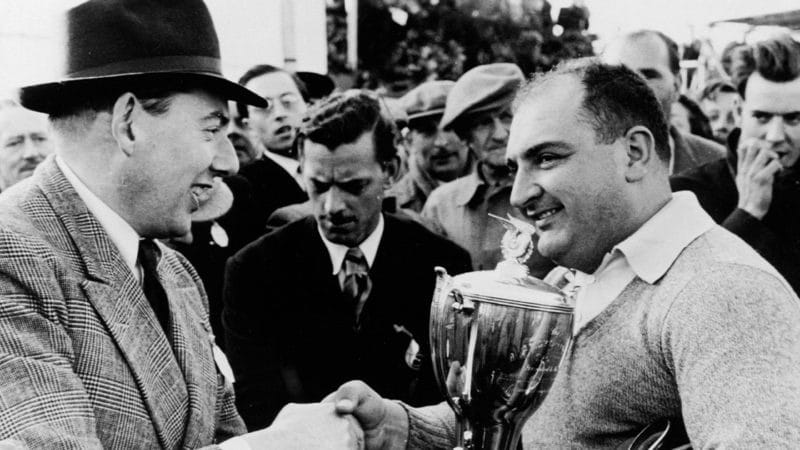
Gonzalez recieves trophy for winning out in ’51
Getty Images
I didn’t watch this one, but perhaps the British GP I remember best is the next one, in 1951, when the burly Gonzalez beat Fangio. The important thing of course is that it was the rust defeat of the Alfettas since they had failed at St Cloud in 1946, when they had been too hurriedly taken out of hibernation. The thing is that Gonzalez’s Ferrari V12 was a simpler but much more modern car. To stay ahead of it, Alfa-Romeo had pushed the power so far that to avoid refuelling too often the car was carrying a massive 332 litres of fuel in several auxiliary tanks — one of which was alongside the engine, another one next to the legs of the driver. With the fuel level changing, it was impossible to keep the car in balance for more than a few laps, and on this day Fangio just couldn’t cope with Gonzalez, who was in scintillating good form all week-end. He had taken pole position as well, despite the power handicap of his Ferrari 375, which was the ‘T-car’ for the wain with single ignition.
Actually Gonzalez wasn’t supposed to drive for Ferrari at all that season; the car was destined for Taruffi, but the latter was also the team manager of a motorcycle team which had kept him busy during the previous GP in Reims, and Gonzalez had given up his Maserati-Milan to deputise for him. He did well and kept the drive for Silverstone. Gonzalez wasn’t as consistent as Fangio, but, on his day, he could beat the Great Master fair and square. After 1951 he did it again in 1954, also at Silverstone.
